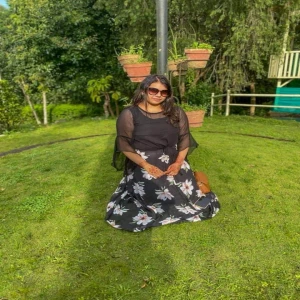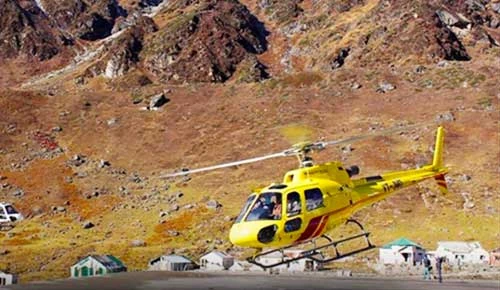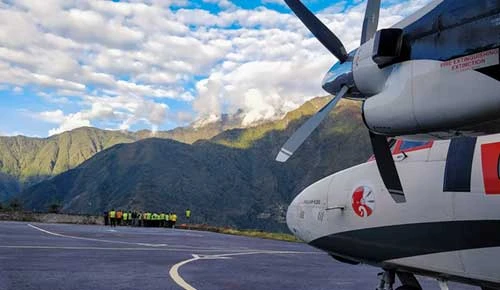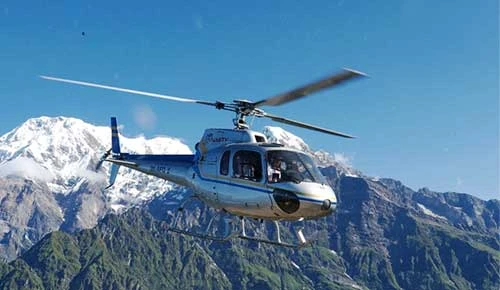Bardia National Park
Bardia National Park is located in Nepal’s Terai region and is a tribute to the nation's dedication to protecting its abundant biodiversity.
Bardia, the biggest national park in Nepal, covers an area of over 968 square kilometers and provides refuge to a wide variety of animal species, some of which are critically endangered.
The park's varied terrain, which includes wide grasslands, serene riverine valleys, and rich subtropical woods, is one of its most distinctive aspects.
The magnificent Bengal tiger, the rare one-horned rhinoceros, Asian elephants, and the endangered Gangetic dolphin are just a few of the animals that call this varied landscape home.
In addition to having amazing wildlife, Bardia National Park has a rich cultural history, with native Tharu villages living on its edges. Through guided village visits, visitors may fully immerse themselves in the local way of life, learning about customs, practices, and food that enhance their wilderness experience.
Bardia has a variety of activities for those looking for an adrenaline rush, such as multi-day hikes into the park's center, jungle safaris, elephant rides, and birding expeditions.
These excursions offer unmatched chances to see wildlife in its native environment while exploring the park's magnificent scenery.
Bardia National Park is a representation of Nepal's commitment to conservation, combining natural beauty, a wide variety of species, and a rich cultural heritage in an overall balance.
Bardia extends a warm welcome to everyone who comes seeking adventure, comfort, or a deeply immersing cultural experience and promises an incredible journey into the heart of nature.
Essential Information for Bardia National Park
Feature | Information |
Area | 968 sq. km (374 sq. mi) |
Location | Western Terai, Nepal |
Established Date | 1988 |
UNESCO World Heritage Site | No |
Buffer Zone | 327 sq. km surrounding the park |
Management | Department of National Parks and Wildlife Conservation (DNPWC) |
Number of Species | Over 53 mammals, 230+ birds, & various reptiles, fish, and insects |
Activities | Jeep safaris, elephant safaris, bird watching, river rafting, nature walks, and Tharu village visits |
Key Attractions | Wildlife viewing (especially tigers & rhinos), Karnali & Babai rivers, Tharu culture, Gharial and Mugger crocodile breeding center |
Entry Fees | $30 USD for foreigners, $2 USD for SAARC nationals |
Table of Contents
History of Bardia National Park
Bardia National Park has an extensive and distinguished past spanning several decades. Originally named the Karnali Wildlife Reserve, the park was created in 1976 and became a protected area.
Its main goal was to offer refuge to the area's declining animal species, which were coming under more and more pressure from poaching, habitat damage, and human encroachment.
The park experienced a major development in 1982 and was renamed Bardia National Park, covering a greater area of around 968 square kilometers.
The objective of this extension was to enhance the protection of the many ecosystems and animal species present within its boundaries, which include critically endangered species like the one-horned rhinoceros and Bengal tiger.
Bardia National Park has faced several difficulties throughout the years, including poaching, local community encroachment, and illegal logging.
Nonetheless, these risks have been lessened and the park's natural integrity has been restored thanks to coordinated conservation efforts headed by the Nepalese government, non-governmental groups, and local people.
A significant turning point in the park's history was the introduction of a community-based conservation strategy in the early 2000s, which gave the local Tharu people the ability to actively engage in park administration and gain from ecotourism projects.
This creative strategy not only aided in conservation efforts but also promoted sustainable growth and better living conditions for the locals. Bardia National Park is a prime example of effective conservation and community involvement today.
Flora and Fauna of Bardia National Park
Bardia National Park is home to a broad range of habitats, including subtropical forests, grasslands, and riverine valleys, which contribute to the park's spectacular diversity of flora and animals.
The park is a paradise for both researchers and nature lovers because of its rich flora, which offers habitat and food for a wide range of animal species.
Flora
The park is home to about 839 different types of vegetation, including water plants, grasses, trees, and shrubs.
The park is known for its deep woods, which are mostly made up of species like sal trees, which are common in Nepal's Terai area. Along with a range of shrubs, grasses, and climbers, common tree species include sissoo, khair, and simal.
Aquatic species depend on the thriving flora in riverine environments, which includes meadows, reeds, and water lilies.
Fauna
Bardia National Park is well known for its varied wildlife, which includes several charismatic and endangered species.
About 53 different mammal species can be found in the park, including well-known creatures like the Asian elephant, Bengal tiger, one-horned rhinoceros, swamp deer, and wild water buffalo.
The park is home to many other important creatures, such as sloth bears, langur monkeys, spotted and barking deer, and leopards.
With more than 400 different bird species identified within its borders, the park's avifauna is similarly remarkable.
Bardia National Park is home to several significant bird species, including vultures, owls, storks, herons, and ducks.
Bardia is home to a wide variety of fish, amphibians, and reptiles, in addition to mammals and birds. Numerous types of fish, turtles, gharials, and mugger crocodiles can be found in the park's rivers and other bodies of water.
Activities to do in Bardia National Park
- Jungle Safari: Take an exciting jungle safari to see Bardia's many ecosystems and see animals including deer, tigers, rhinoceroses, and elephants. There are three ways to go on a safari: by jeep, on foot, or riding elephants. Each offers a unique viewpoint on the splendor of the park.
- Birdwatching: Bardia National Park is a birdwatcher's delight, home to over 400 kinds of birds. Take part in guided birding expeditions to see endemic and uncommon species like the sarus crane, white-rumped vulture, and Bengal florican.
- Nature Walks: Enjoy leisurely nature walks with knowledgeable guides who will provide insights into the flora, animals, and ecosystems of Bardia as you stroll through the park's lush woods and riverine meadows.
- Cultural Tours: Get an in-depth look at the various cultural customs of the Tharu people who live in the areas around Bardia National Park. Take part in guided Bariya National Park tour of the village to discover the customs, traditions, and food of the area.
- Canoeing: Take a canoeing journey across the serene waters of the Babai and Karnali rivers. Enjoy peaceful vistas of the park's topography and explore the riverbanks for animals.
- Wildlife Photography: Use your camera to capture the jaw-dropping beauty of Bardia's fauna and scenery. The park provides countless chances for breathtaking images of wildlife and the natural world, regardless of your level of expertise as a photographer.
Villages near Bardia National Park
Bardia National Park is surrounded by several villages, these villages provide tourists with the opportunity for immersive experiences and insights into local culture. Among the settlements close to Bardia National Park are:
Thakurdwara
This village is close to the Bardia National Park entrance. It provides lodging, dining options, and retail establishments in addition to acting as a gate for park visitors.
Bagnaha:
Bagnaha is a village located just outside Bardia National Park. Native Tharu communities, renowned for their own culture, traditional dances, and handicrafts, mostly live in this area. Travelers can discover the communities of the Tharu people, engage with their way of life, and explore them.
Lamki Chuha:
Lamki Chuha village is situated close to the western edge of Bardia National Park, beside the Karnali River. It is a well-liked destination for those visiting the region since it provides breathtaking views of the river and the surrounding scenery.
Rajapur:
Rajapur village is situated on the Bardia National Park's perimeter. There are chances for cultural immersion through homestays, village visits, and cultural activities.
Gulariya
Gulariya municipality lies to the southwest of Bardia National Park. In addition to providing lodging, dining options, and transportation for tourists, it acts as the region's administrative and commercial hub.
Entry Fees for Bardia National Park
Here's a breakdown of entry fees for Bardia National Park:
- Foreigners: 1,500 Nepalese rupees per person per day.
- SAARC Nationals: 750 Nepalese rupees per person per day.
- Nepali Citizens: 100 Nepalese rupees per person per day.
- Children under 10 years: Free
Important Policies while visiting Bardia National Park
- In order to respect animals, keep your distance from them so as not to interfere with their natural habitats or habits. This guarantees the animals' welfare as well as your protection.
- Stick to established paths and roads to avoid your negative impact on the plants. This contributes to maintaining the park's biodiversity and natural beauty.
- Take responsibility for your waste management by gathering and properly disposing of all rubbish. Littering can damage the park's natural ecology and endanger wildlife.
- Smoking is not permitted as it increases the risk of wildfires inside the national park.
- Make sure you have the relevant permits and have paid any entrance costs before entering the park. This helps keep park infrastructure up to date and supports conservation activities.
- It is forbidden to hunt, fish, or gather plants and animals inside park limits. The national park works for conservation of these flora and fauna, which is why travelers are not allowed to hunt inside the park.
- Respect the local people who live close to the park by following their traditions and practices. This encourages cooperation and sustains eco-friendly travel methods.
Encounter the Natural Beauty of Bardia National Park of Nepal
In conclusion, Bardia National Park provides a haven for a wide variety of plants and animals, including some of the most famous and endangered species in the world, from the verdant woods to the serene riverine valleys.
In addition to participating in exciting jungle safaris and birding excursions, visitors to Bardia can also fully immerse themselves in the vivid culture of the surrounding Tharu people and support conservation efforts by using responsible tourism practices.
Bardia National Park enables us to enjoy a deeper connection with the natural world while cultivating a sense of care for the amazing biodiversity of our planet. It symbolizes the balance between humanity and the environment.








